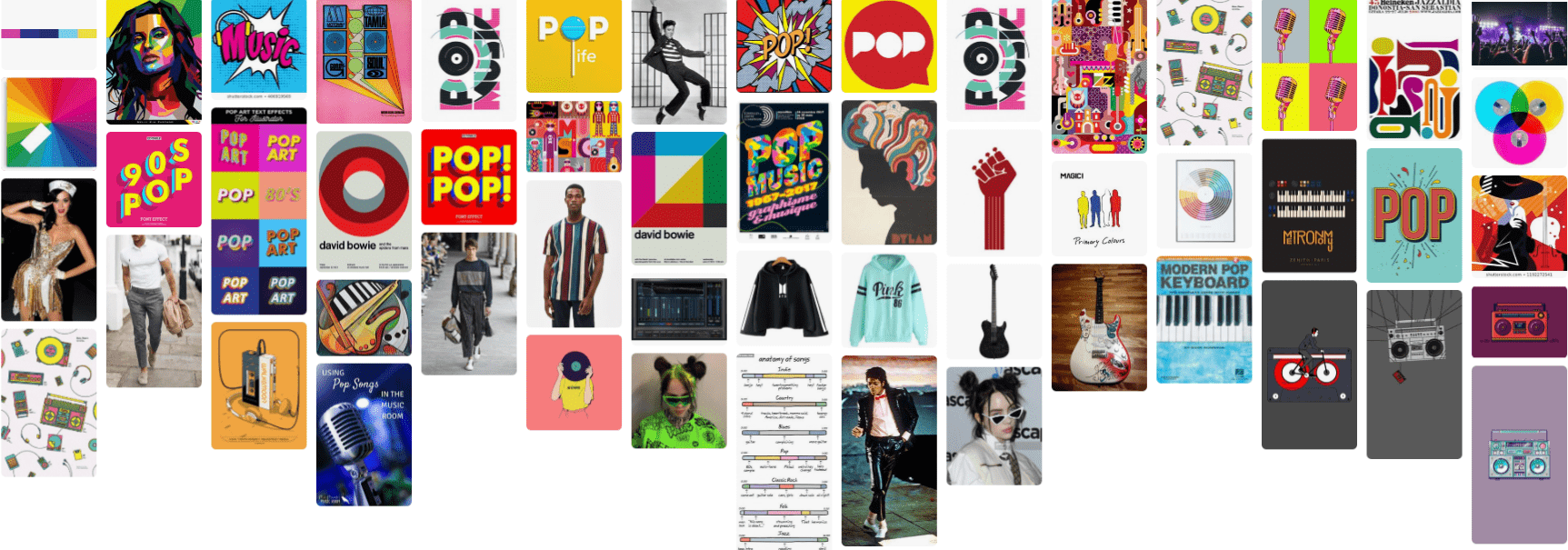Communicating my Brand
I have created this mood board on Pinterest and researched all different areas of the music genre ‘pop’ such as:
- Colours
- Clothing
- Fonts
- Instruments
- Styles
- Graphic Designs
I have learnt that graphic designers are always researching their genre because the media is music world is constantly changing. I will use this mood board as inspiration when designing my magazine to know what colours suit the genre and what fonts suit the colours and the genre.






